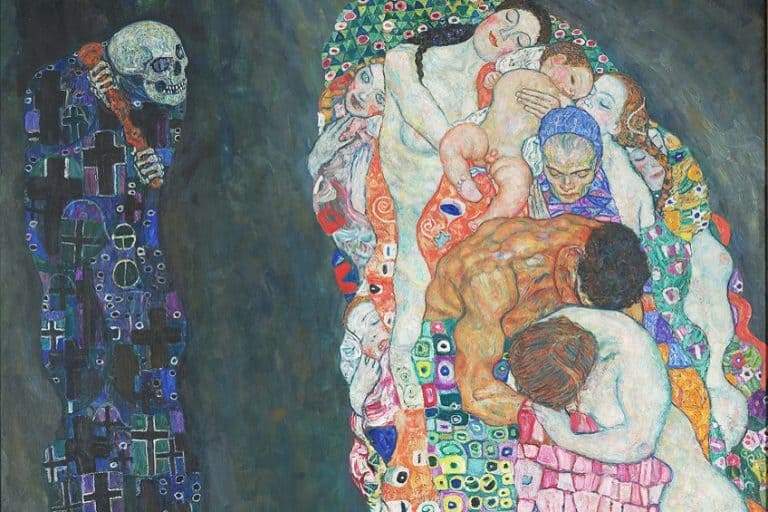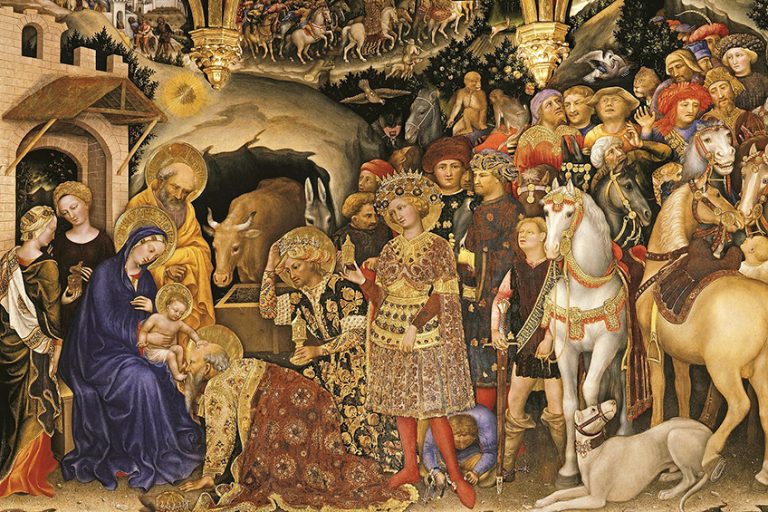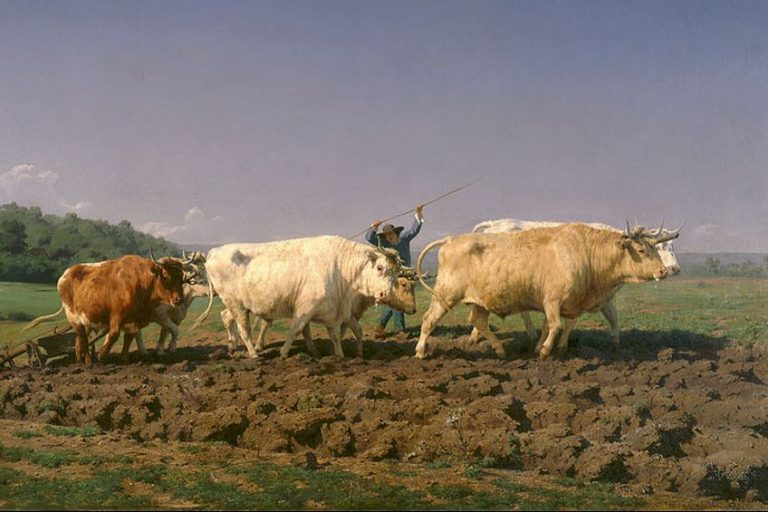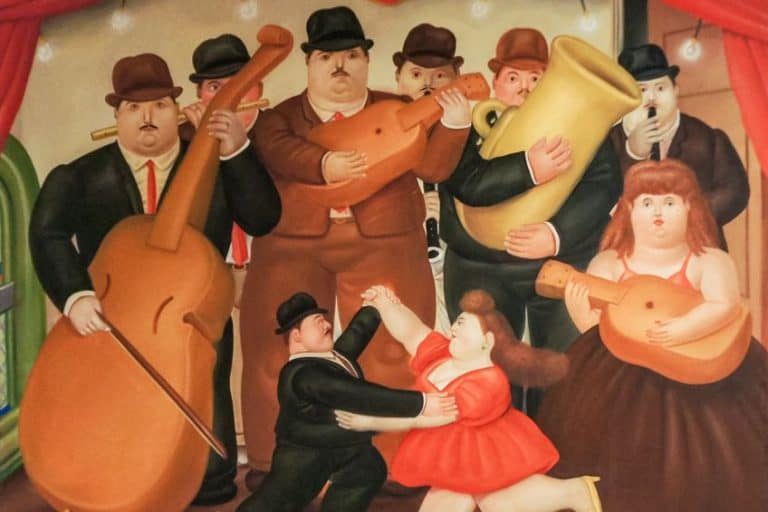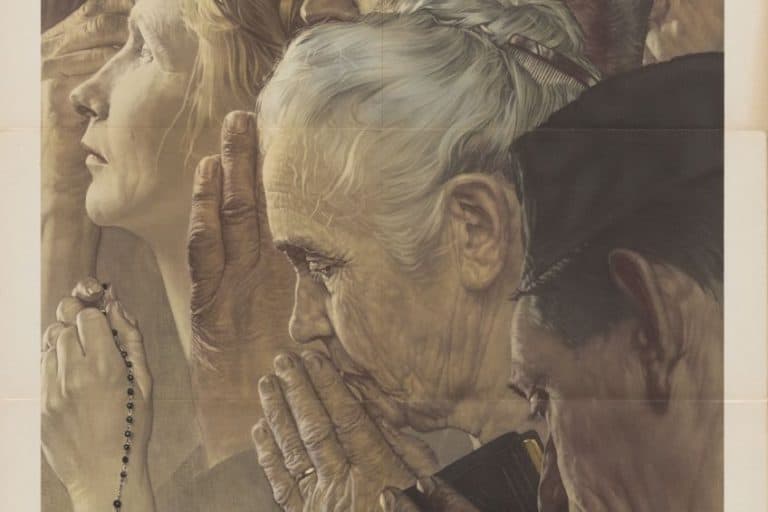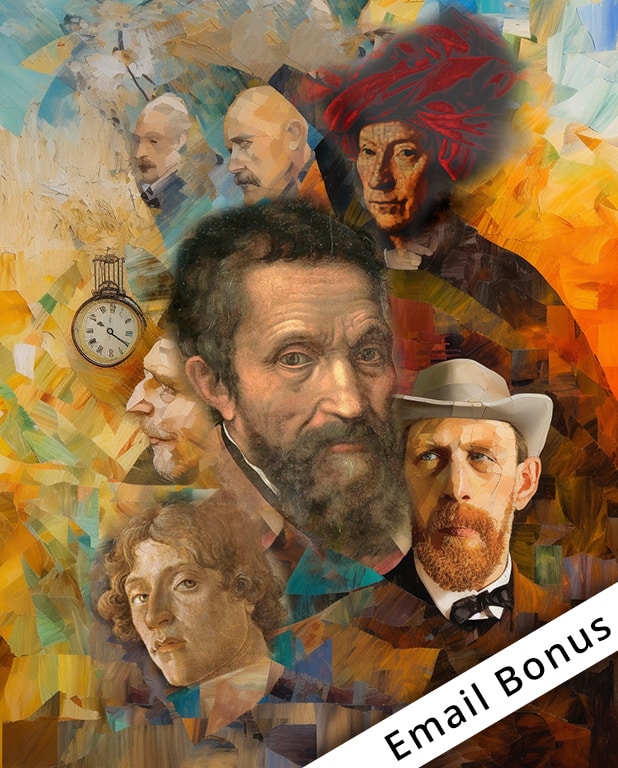Salvador Dali Paintings – His 59 Most Valuable, Important Works
Welcome to the mesmerizing world of Salvador Dalí, where the boundaries of reality blur into dreamscapes and surrealism reigns supreme. Today, we delve into an aspect of Dalí’s legacy that is as fascinating as his art itself – the astounding prices his masterpieces have fetched at auction. From the ethereal ‘Portrait De Paul Eluard’ to the enigmatic ‘Maison Pour Erotomane,’ each painting not only showcases Dalí’s unparalleled imagination but also reflects the enduring allure and value of his work in the art market. In this blog, we’ll explore the record-breaking sales of Dalí’s paintings, providing a glimpse into the world of high-stakes art auctions and the timeless appeal of this Surrealist icon. Also, we have a comprehensive overview of his other important artworks.
Overview of Salvador Dali’s Most Valuable Paintings
| Painting Title | Selling Price (GBP) | Selling Price (USD) | Place of Sale | Date of Sale |
|---|---|---|---|---|
| Portrait De Paul Eluard | £13.5M | $17,010,000 | Sotheby’s London | 10th February 2011 |
| Printemps Necrophilique | £10.1M | $12,726,000 | Sotheby’s New York | 2nd May 2012 |
| Couple With Their Heads Full Of Clouds | £8.2M | $10,332,000 | Bonhams London | 15th October 2020 |
| The Angelus | £8.0M | $10,080,000 | Sotheby’s New York | 16th November 2021 |
| Moment Of Transition | £5.4M | $6,804,000 | Christie’s New York | 6th May 2014 |
| Spectre Du Soir Sur La Plage | £5.2M | $6,552,000 | Sotheby’s New York | 14th November 2017 |
| La Musique | £5.0M | $6,300,000 | Sotheby’s New York | 19th June 2013 |
| Honey Is Sweeter Than Blood | £4.1M | $5,166,000 | Christie’s London | 9th February 2011 |
| Maison Pour Erotomane | £3.5M | $4,410,000 | Sotheby’s London | 28th February 2018 |
Portrait De Paul Eluard (1929):
This portrait is a testament to Dalí’s early Surrealist phase, capturing the essence of his friend, the poet Paul Eluard. It combines realism with dream-like elements, showcasing Dalí’s emerging unique style.
Sold for nearly £13.5 million at Sotheby’s London on 10th February 2011, this painting set a record for Dalí’s work at auction, highlighting his enduring appeal among collectors.
Printemps Necrophilique (1936)
This painting, featuring a seated man and a flower-headed woman in a desert landscape, epitomizes Dalí’s mature Surrealist style. It intertwines dream, memory, and subconscious elements.
At Sotheby’s New York on May 2nd, 2012, it fetched over £10 million, a testament to its impact in the art world.
Couple With Their Heads Full Of Clouds (1936)
Inspired by Jean Francoise Millet, this diptych portrays Dalí and his wife Gala with clouds in place of their heads. It sold for nearly £8.2 million at Bonhams London on October 15th, 2020. The painting was originally a wedding gift to Paul Eluard, adding a layer of personal history to its sale.
The Angelus (1935)
This work reimagines Millet’s painting ‘The Angelus’ with ancient towers representing the figures. It sold for just shy of £8 million at Sotheby’s New York on 16th November 2021. Dalí’s reinterpretation of a 19th-century religious subject into a Surrealist vision captivated the bidders.
Moment Of Transition (1934)
Depicting a desolate Catalonian landscape with a surreal carriage, this painting reflects Dalí’s early immersion into Surrealism. It was sold for £5.4 million at Christie’s New York on May 6th, 2014. The sale highlighted Dalí’s blend of hyperrealism with dreamlike elements.
Spectre Du Soir Sur La Plage (1935)
Influenced by childhood memories, this haunting composition sold at Sotheby’s New York on 14th November 2017 for £5.2 million. Its desolate landscape and crippled spectre figure echo themes of isolation and ambiguity.
Archeological Reminiscence of Millet’s ‘Angelus’ (1933 – 1935)
Another significant Salvador Dalí art piece was his Archeological Reminiscence of Millet’s ‘Angelus’, which he painted between 1933 and 1935. Said to be influenced by Jean-François Millet’s The Angelus (1857 – 1859), Dalí often recalled a memory of him passing the hours at school by focusing on this specific painting of two farmworkers.
In the original painting, the two figures are shown to be reciting a devotional prayer just before their working day ends.

The Angelus (1857-1859) by Jean-François Millet; Jean-François Millet, Public domain, via Wikimedia Commons
La Musique (1957)
A later work, ‘La Musique’ depicts two disembodied musicians against a red curtain. It reflects Dalí’s fascination with surrealism and music. This painting was sold for just over £5 million at Sotheby’s New York on June 19th, 2013, showcasing Dalí’s continued exploration of surreal themes in his later years.
Honey Is Sweeter Than Blood (1927)
Considered Dalí’s first real Surrealist painting, this piece was sold for £4 million at Christie’s London on 9th February 2011. It represents Dalí’s early engagement with Surrealist ideas and features a disturbing, dreamlike space.
Maison Pour Erotomane (1936)
A classic example of Dalí’s work during the peak of his Surrealist career, it was sold for £3.5 million at Sotheby’s London on 28th February 2018. The painting’s Catalonian desert landscape and sinuous rocks exemplify Dalí’s distinctive approach to surrealism.
Salvador Dali’s Most Important Artworks
Morphological Echo (1936)
In this work, Dalí explores the theme of repetition and transformation. The painting features a series of objects and figures that transform and echo one another across a vast, barren landscape, creating a sense of continuity. It’s a testament to Dalí’s fascination with the subconscious and the fluidity of perception.
The Persistence of Memory (1931)
Famous for its surreal, melting clocks draped over a desolate landscape, this painting is a profound meditation on the fluidity and distortion of time. It challenges the viewer’s conventional perception of reality and is often interpreted as a representation of the dream world.
The Disintegration of the Persistence of Memory (1952-1954)
This work revisits the themes of his earlier masterpiece, portraying the melting clocks in a state of disintegration, symbolizing the ephemeral nature of material existence. The atomic imagery reflects Dalí’s interest in nuclear physics post-World War II.
Metamorphosis of Narcissus (1937)
Inspired by the Greek myth, this painting vividly illustrates the transformation of Narcissus into a flower. The dual images reflect Dalí’s fascination with duality and optical illusions, revealing his unique approach to narrative and symbolism.
Slave Market with the Disappearing Bust of Voltaire (1940)
This ingenious painting combines historical and visual trickery, where the bust of Voltaire appears when viewed from a distance. It’s an example of Dalí’s skill in creating multiple images and illusions within a single composition.
The Hallucinogenic Toreador (1968-1970)
This large-scale piece is an amalgam of Dalí’s personal, historical, and cultural interests. It depicts a toreador, Venus de Milo figures, and a bullfighting scene, embedded with optical illusions and references to his wife, Gala.
Christ of Saint John of the Cross (1951)
A religious and mystical piece, it depicts Christ on the cross in a darkened sky, floating over a body of water. The perspective is unique, lacking the nails and blood of traditional crucifixion scenes, emphasizing a more universal spirituality.
The Temptation of St. Anthony (1946)
This painting presents a dream-like vision where St. Anthony is tempted by fantastical creatures and objects, including a horse and elephants with long, spindly legs. It’s a reflection of Dalí’s interest in religious themes and his unique interpretation of biblical stories.
Cabaret Scene (1922)
Less known than his Surrealist works, this early painting showcases Dalí’s diverse range in style. It depicts a lively cabaret scene, filled with figures and a sense of movement, highlighting Dalí’s ability to capture the essence of a moment.
The Great Masturbator (1929)
This self-portrait is a deeply personal piece reflecting Dalí’s fears, desires, and obsessions. The central figure’s face resembles Dalí’s own, and the painting is filled with symbolic imagery, including ants and a grasshopper, often interpreted as symbols of decay and fear
Portrait of Gala (1935)
This painting captures Dalí’s wife and muse, Gala, in a strikingly realistic manner. It reflects her significant influence on his life and art, showcasing Dalí’s skill in portraiture alongside his more surreal works.
Apparition of Face and Fruit Dish on a Beach (1938)
A quintessential Dalí painting that blends landscape with illusion, this artwork features a fruit dish that also forms a face when viewed from a distance. It plays with perception, creating a sense of mystery and duality.
The Enigma of Hitler (1939)
A controversial piece, this painting depicts a somber and desolate scene with references to Hitler. It reflects Dalí’s engagement with contemporary history and politics, filled with symbolic elements that have been subject to various interpretations.
Sleep (1937)
This work depicts a figure seemingly held up by crutches, encapsulating the theme of deep sleep or a dream state. The distorted and elongated limbs convey a sense of vulnerability and distortion that often accompanies the dream world.
The Discovery of America by Christopher Columbus (1958-1959)
This grand, historical painting presents a surreal and dreamlike interpretation of Columbus’s journey to the New World. It combines elements of American history, religious symbolism, and personal mythology.
The Meditative Rose (1958)
A simple yet captivating painting where a solitary rose floats high above a couple in a vast desert landscape. It symbolizes beauty and isolation, conveying a sense of tranquility and introspection.
Alice in Wonderland (1969)
Inspired by Lewis Carroll’s famous novel, this piece captures the whimsical and bizarre nature of the story. Dalí’s interpretation adds a surreal and dreamlike quality to the familiar tale.
Dream Caused by the Flight of a Bee Around a Pomegranate a Second Before Awakening (1944)
This painting vividly illustrates a dream sequence where a sleeping figure floats above a rock. The dream is supposedly induced by the buzzing of a bee, with tigers, a pomegranate, and a rifle adding to the surreal narrative.
Gala Contemplating the Mediterranean Sea (1976)
This large-scale work depicts Dalí’s muse, Gala, looking at the Mediterranean Sea. At a distance, the image transforms into a portrait of Abraham Lincoln, demonstrating Dalí’s mastery of optical illusion.
Lobster Telephone (1936)
A famous example of Dalí’s foray into surrealist sculpture, this piece combines a functioning telephone with a lobster. It’s a playful yet thought-provoking work that challenges conventional notions of utility and art.
Portrait of Pablo Picasso (1947)
In this homage to Picasso, Dalí merges his own surrealistic style with elements reminiscent of Picasso’s art. The portrait is both a tribute and a study in contrasts between the two iconic artists.
The Sistine Madonna (1958)
Dalí’s reinterpretation of Raphael’s famous work is a fusion of classic religious iconography with his unique surrealistic vision, showcasing his ability to blend different art historical periods.
Galacidalacidesoxyribonucleicacid (1963)
This complex, multi-layered work reflects Dalí’s interest in science, specifically DNA. The title itself is a play on words, combining the name of his wife Gala with the scientific term for DNA, indicating his fascination with the intersection of art and science.
Study for The Dream of Venus (1939)
This piece was a preparatory work for Dalí’s installation at the 1939 World’s Fair. It showcases his imaginative approach to blending dreamlike imagery with classical references.
The First Days of Spring (1929)
This painting is a vibrant depiction of the awakening of nature. Its surreal landscape is filled with symbolic imagery, reflecting Dalí’s fascination with the subconscious.
The Sacrament of the Last Supper (1955)
In this reinterpretation of the biblical scene, Dalí infuses his unique surrealistic elements into the iconic religious subject, creating a mystical and ethereal atmosphere.
Galatea of the Spheres (1952)
This artwork depicting Gala composed of suspended spheres, showcases Dalí’s interest in atomic physics and the discontinuous nature of matter, blending scientific concepts with his surrealistic style.
The Dream (1931)
This painting shows a figure seated on a rock, with a head seemingly exploding into a cloud of butterflies. It’s a vivid representation of the sudden and transformative nature of dreams.
Landscape with Butterflies (1956)
This artwork showcases a serene landscape populated by a flurry of butterflies. It’s a celebration of nature’s beauty and the ephemeral, delicate nature of life.
The Ants (1929)
Ants, a recurring motif in Dalí’s work, symbolizing decay and intense anxiety, are featured prominently in this painting. They are often interpreted as a reflection of Dalí’s own fears and obsessions.
Swans Reflecting Elephants (1937)
This painting is a classic example of Dalí’s love for double images. Swans on a lake reflect in the water to become elephants. This clever use of reflection and transformation showcases his ability to warp reality and perception.
The Burning Giraffe (1937)
In this painting, Dalí employs dreamlike imagery, including a giraffe with its back ablaze and female figures with drawers protruding from their bodies. It’s often interpreted as a premonition of war, reflecting the turmoil in Europe during the 1930s.
Illumined Pleasures (1929)
This small but complex work combines a vast array of imagery in a dream-like collage. The painting includes various scenes within small compartments, each portraying different surreal visions, reflecting Dalí’s fascination with the subconscious mind.
The Birth of Liquid Desires (1932)
Characteristic of Dalí’s style, this painting is filled with dreamlike and erotic imagery. It explores the fluidity of desire and the subconscious, using melting forms and ambiguous figures.
The Poetry of America (1943)
This painting comments on the cultural and political landscape of America. It’s a chaotic and vibrant piece, filled with symbols and imagery that reflect Dalí’s views on American society.
Young Woman in a Landscape (1927)
A more traditional subject matter for Dalí, this painting portrays a young woman in a landscape setting. However, his surreal touch is evident in the dreamlike quality and subtle distortions within the scene.
Surrealist Composition with Invisible Figures (1936)
True to its title, this painting features a surreal landscape with figures that are implied rather than explicitly depicted. It’s a play on perception and the power of imagination.
Daddy Longlegs of the Evening (1940)
This painting, with its twilight setting, showcases Dalí’s fascination with the grotesque and bizarre. The elongated legs of the insect evoke a sense of foreboding, set against a backdrop of a decaying animal.
The Old Age of William Tell (1931)
This piece combines elements of legend with Dalí’s unique surreal vision. It portrays an aged William Tell, a figure from Swiss folklore, in a distorted and dreamlike landscape, reflecting on themes of aging and mythology.
Still Life Moving Fast (1956)
A testament to Dalí’s skill in still life, this painting presents everyday objects in motion, challenging the traditional concept of still life. The dynamic arrangement creates a sense of urgency and the fleeting nature of time.
The Invisible Man (1929-1933)
Inspired by H.G. Wells’ novel, Dalí’s interpretation is a complex, multi-layered work featuring a figure that is both present and absent, playing with the themes of visibility and identity.
The Angel of Port Lligat (1950)
This artwork features a fragmented angel figure in a serene landscape of Port Lligat, where Dalí lived. It’s a personal piece, reflecting his connection to the area and his exploration of religious themes.
A Chemist Lifting with Extreme Precaution the Cuticle of a Grand Piano (1936)
This eccentric title reflects Dalí’s whimsical approach to art. The painting juxtaposes a chemist with a grand piano, blending science and music in a surreal composition.
The Elephants (1948)
Characterized by the strikingly long and spindly legs of the elephants, this painting creates a sense of otherworldliness. The elephants carry obelisks on their backs, which is thought to symbolize weightlessness and structure, juxtaposing strength with fragility.
Atavistic Vestiges After the Rain (1934)
This artwork features a desolate landscape with various figures and objects that seem to be remnants of a bygone era. The theme of decay and the passage of time is prevalent, with the figures appearing almost as archaeological discoveries.
Venus de Milo with Drawers (1936)
A sculptural work by Dalí, this piece reimagines the famous Venus de Milo statue with drawers in her body. This symbolizes the hidden aspects of the human psyche, a recurring theme in Dalí’s works.
The Grand Inquisitor (1955)
Depicting a figure reminiscent of a religious inquisitor, this painting is filled with Dalí’s typical surreal imagery. It’s a complex work that intertwines religious, historical, and psychological themes.
Profile of Time (1977)
In this sculpture, Dalí returns to the theme of melting clocks, presenting time as a fluid and malleable entity. The elongated clock draped over a tree-like form creates a sense of time’s persistence and ethereality.
Isabella studied at the University of Cape Town in South Africa and graduated with a Bachelor of Arts majoring in English Literature & Language and Psychology. Throughout her undergraduate years, she took Art History as an additional subject and absolutely loved it. Building on from her art history knowledge that began in high school, art has always been a particular area of fascination for her. From learning about artworks previously unknown to her, or sharpening her existing understanding of specific works, the ability to continue learning within this interesting sphere excites her greatly.
Her focal points of interest in art history encompass profiling specific artists and art movements, as it is these areas where she is able to really dig deep into the rich narrative of the art world. Additionally, she particularly enjoys exploring the different artistic styles of the 20th century, as well as the important impact that female artists have had on the development of art history.
Learn more about Isabella Meyer and the Art in Context Team.
Cite this Article
Isabella, Meyer, “Salvador Dali Paintings – His 59 Most Valuable, Important Works.” Art in Context. October 23, 2021. URL: https://artincontext.org/salvador-dali-paintings/
Meyer, I. (2021, 23 October). Salvador Dali Paintings – His 59 Most Valuable, Important Works. Art in Context. https://artincontext.org/salvador-dali-paintings/
Meyer, Isabella. “Salvador Dali Paintings – His 59 Most Valuable, Important Works.” Art in Context, October 23, 2021. https://artincontext.org/salvador-dali-paintings/.




